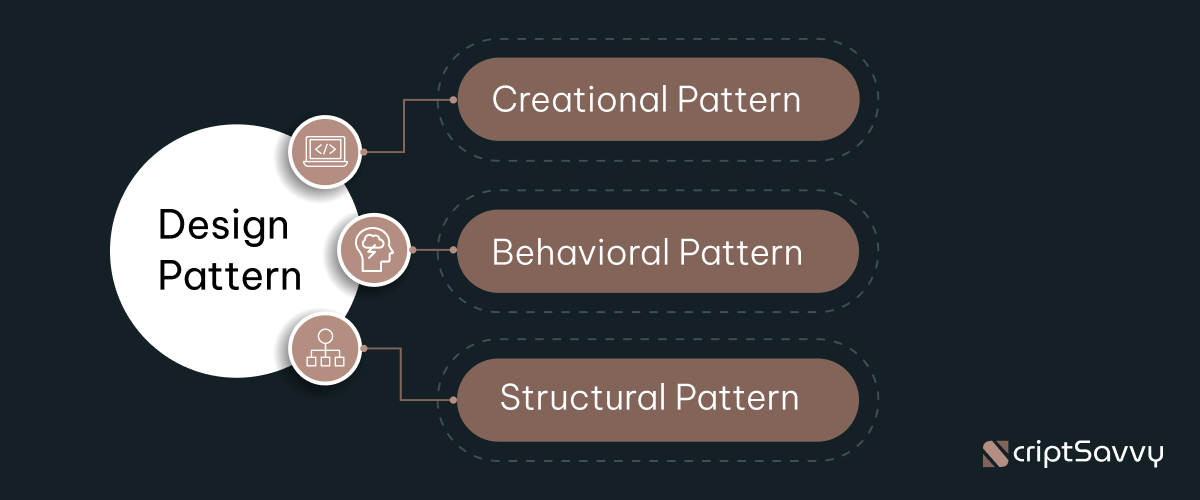Getting to Know Design Patterns in Software Development
What are Design Patterns?
Design patterns are common solutions to recurring problems in software development. The main purpose of using design patterns is to provide a structured way to solve recurring problems. With design patterns, developers can save time and effort in dealing with frequently occurring issues.
The importance of understanding design patterns is also evident in how they help address recurring problems. In software development, we often face the same problems, and with design patterns, we can have clear guidance in solving those problems.
Does Design Pattern Affect Developer Performance?
Understanding and implementing design patterns can influence the efficiency and effectiveness of developers' work. By using design patterns, developers can have clear guidance in solving frequently occurring problems. This can improve work efficiency because developers no longer need to search for solutions from scratch every time they encounter the same problem.
A comparison between using design patterns and not using them also shows significant differences. With design patterns, developers can have more structured and easily understandable code. This will certainly affect the quality of the resulting software.
Various Types of Design Patterns with Illustrative Examples
There are three main categories according to their purpose, namely Creational Pattern, Behavioral Pattern, and Structural Pattern.
Creational Pattern
This pattern is a solution to problems that arise in creating an instance or object. Some examples of Creational Patterns include:
-
Factory Method: Used to create objects without explicitly specifying their classes.
-
Prototype: Used to create new objects based on existing objects.
-
Abstract Factory: Used to create a set of related objects without specifying their concrete classes.
-
Builder: Used to construct complex objects step by step.
-
Singleton: Used to ensure that a class has only one instance and provides a global access point to it.
Behavioral Pattern
This pattern is a solution to problems that arise in communication between objects. Some examples of Behavioral Patterns include:
-
Template Method: Used to define the framework of an algorithm in a method but let some steps be implemented by subclasses.
-
Strategy: Used to define a group of algorithms, encapsulate them, and make them interchangeable.
-
Command: Used to encapsulate a request as an object, allowing parameterization of clients with commands.
-
Memento: Used to capture and restore the internal state of an object so that it can be returned to its previous state.
-
Mediator: Used to reduce dependencies between objects so that they do not communicate with each other explicitly.
-
State: Used to change an object's behavior when its state changes.
-
Observer: Used to notify related objects when the state of an object changes.
-
Iterator: Used to provide a way to access elements of an object without exposing its internal representation.
-
Chain of Responsibility: Used to give more than one object the chance to handle a request without explicit specification of the request's recipient.
-
Interpreter: Used to define a way to interpret a language or specific grammar.
-
Visitor: Used to add new operations to the object structure without modifying the structure itself.
Structural Pattern
This pattern is a solution to problems that arise in arranging the composition of classes and objects. Some examples of Structural Patterns include:
-
Adapter: Used to unite two incompatible interfaces.
-
Composite: Used to compose objects into tree structures to represent part-whole hierarchies.
-
Decorator: Used to dynamically add responsibilities to objects.
-
Proxy: Used to control access to the original object.
-
Façade: Used to provide a higher-level interface that makes the subsystem easier to use.
-
Flyweight: Used to minimize memory usage or execution of many objects by using a small number of objects.
-
Bridge: Used to separate an abstraction from its implementation so that both can change independently.
Benefits of Design Patterns
By using design patterns, developers can obtain various benefits in software development. Some of these benefits include:
-
Speeding up the development process by having clear guidance in solving frequently occurring problems.
-
Improving software quality by having more structured and understandable code.
-
Enhancing software flexibility by having a structured way to handle possible changes.
-
Enhancing software scalability by having proven patterns for solving complex problems.
Conclusion
From the above discussion, it can be concluded that understanding and implementing design patterns are crucial in software development. Design patterns provide clear guidance in solving frequently occurring problems, thereby improving developers' work efficiency and effectiveness. By using design patterns, developers can also reap various benefits in software development, such as improving quality, flexibility, and scalability. Therefore, understanding and implementing design patterns are essential in achieving optimal results in software development.
With a good understanding of various types of design patterns and illustrative examples of common problems and solutions provided by each design pattern, it is hoped that developers can better understand the importance of design patterns in software development.
Hopefully, this article will be beneficial to readers in enhancing their understanding of design patterns in software development.
References
Design Pattern - Refactoring Guru. https://refactoring.guru/design-patterns
Software Design Patterns Tutorial - GeeksforGeeks. https://www.geeksforgeeks.org/software-design-patterns
What Are Design Patterns in Software Development. https://wezom.com/blog/design-patterns-in-software-development
Design Patterns: A Guide to Building Scalable and Maintainable Software.

